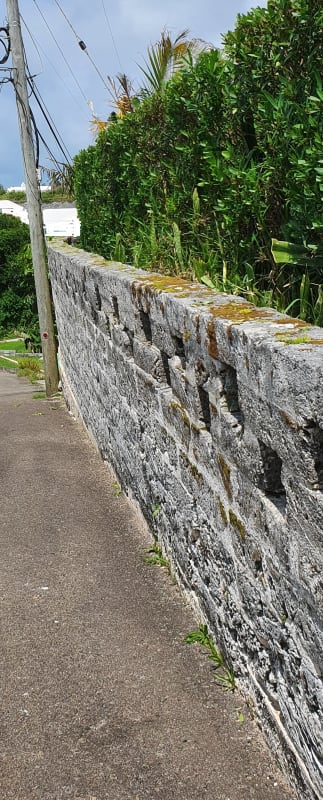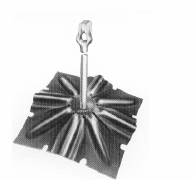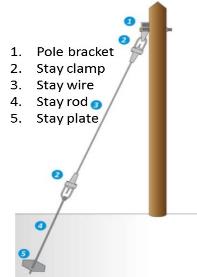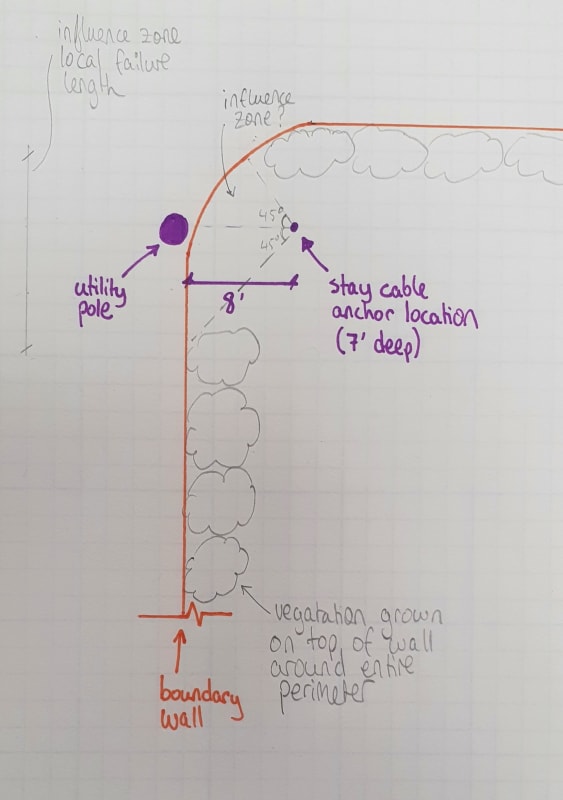psychedomination
Structural
Hi there,
I am dealing with a project where a utility company has a complaint from a homeowner that a utility pole with a stay cable installed near their boundary wall caused the entire length of it to fail.
Some context: the existing wall is not a proper retaining wall and is approximately 8' tall. It has no foundation but is built on rock; it is an old stone wall that is only connected with mortar, see below :

The homeowner hired an engineer to visit the site, who came to the conclusion that the entire stretch of wall (atleast 40’) is failing solely as a result of the utility pole, with the reasoning that due to the pole leaning at the same angle of the wall, it is the sole culprit.
I’m not sure I fully agree with this, although the pole may have contributed partially, I would have thought that this would be mainly a local effect and not cause the entire 40’ run of the wall to fail. The wall is only connected with weak mortar joints, so if the pole rotated, causing the earth to push against the wall, I would have thought it would be a local failure (crack along the mortar joints). I would've also expected to see some heaving or other evidence of movement in the area, which I didn't see.
The utility pole is anchored into the earth with a bust expanding anchor, see typical image below :


With this said, take for instance that the bust expanding anchor is a 2’ square. What would the zone of influence be for the impact that this would have on the earth. Would it be correct to assume a 45 degree influence line? See sketch in plan?

There is a lot of vegetation/trees etc on the top of the wall, I’m thinking this is more likely the culprit to the wall starting to overturn. Normal rotation of the wall should be normal for active earth pressure but I guess this is starting to pass the reasonable rotation amount. Sorry for the long post but wanted to include all relevant information, any thoughts would be helpful.
I am dealing with a project where a utility company has a complaint from a homeowner that a utility pole with a stay cable installed near their boundary wall caused the entire length of it to fail.
Some context: the existing wall is not a proper retaining wall and is approximately 8' tall. It has no foundation but is built on rock; it is an old stone wall that is only connected with mortar, see below :

The homeowner hired an engineer to visit the site, who came to the conclusion that the entire stretch of wall (atleast 40’) is failing solely as a result of the utility pole, with the reasoning that due to the pole leaning at the same angle of the wall, it is the sole culprit.
I’m not sure I fully agree with this, although the pole may have contributed partially, I would have thought that this would be mainly a local effect and not cause the entire 40’ run of the wall to fail. The wall is only connected with weak mortar joints, so if the pole rotated, causing the earth to push against the wall, I would have thought it would be a local failure (crack along the mortar joints). I would've also expected to see some heaving or other evidence of movement in the area, which I didn't see.
The utility pole is anchored into the earth with a bust expanding anchor, see typical image below :


With this said, take for instance that the bust expanding anchor is a 2’ square. What would the zone of influence be for the impact that this would have on the earth. Would it be correct to assume a 45 degree influence line? See sketch in plan?

There is a lot of vegetation/trees etc on the top of the wall, I’m thinking this is more likely the culprit to the wall starting to overturn. Normal rotation of the wall should be normal for active earth pressure but I guess this is starting to pass the reasonable rotation amount. Sorry for the long post but wanted to include all relevant information, any thoughts would be helpful.
